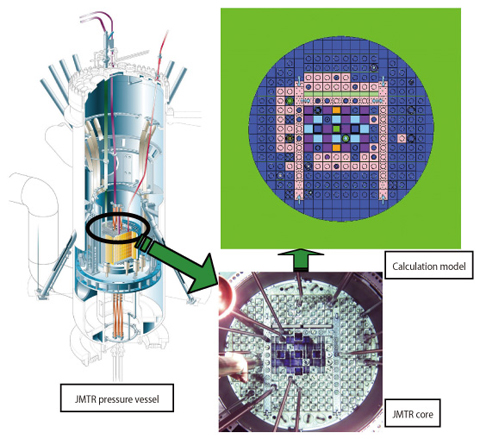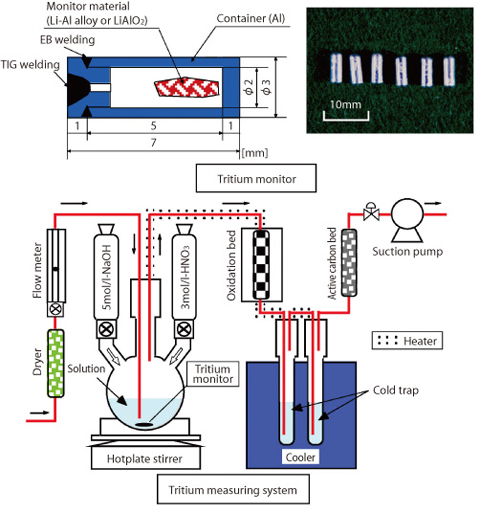
Fig.12-13 Calculation model of JMTR

Fig.12-14 Tritium monitor and its measuring system
Current irradiation research on aging of Light Water Reactor core internal materials, specifically Irradiation Assisted Stress Corrosion Cracking, tritium release of fusion blankets under neutron irradiation, etc. generally needs more accurate prediction, control, and evaluation of irradiation parameters such as neutron fluence, γdose, and production of nuclear transformation products (Helium, Hydrogen, etc.).
An evaluation procedure using continuous energy Monte Carlo code MCNP with a calculation model of the whole 3-D JMTR core (Fig.12-13) has been therefore introduced to evaluate irradiation parameters. Detail analyses of irradiation parameters are conducted before irradiation using this procedure and there results are verified by comparing with the measured values.
Calculated neutron fluence was verified against measurements of irradiated fluence monitors (Iron and Aluminum-Cobalt wires). With regard to γdose, calculated γheating rates were verified against measurements of the nuclear heating evaluation capsule which was developed in order to measure nuclear heating rate (generated from interaction between materials and neutrons or γ-rays). As a result, it was confirmed that the calculated fast and thermal neutron fluence agreed with measurements within ±10%, ±30%, respectively, and the calculated γdose agreed within -3 to +14%.
Amounts of different products of nuclear transmutation, caused by interaction between neutron and nuclide, must be verified individually because they vary depending on the neutron energy spectrum. In the present study, a tritium monitor and a specialized tritium measuring system (Fig.12-14) were developed for verification of tritium production. Tritium measurement experiments to verify the calculated amount of tritium were conducted using the tritium monitors irradiated in the "JMTR". As the result, it was confirmed that the calculated tritium matched the measurement within an error of -1% to +8%. This method is contributing to research and development of the fusion blanket materials.
Development of evaluation techniques of irradiation parameters will be conducted to aid in advanced irradiation research.